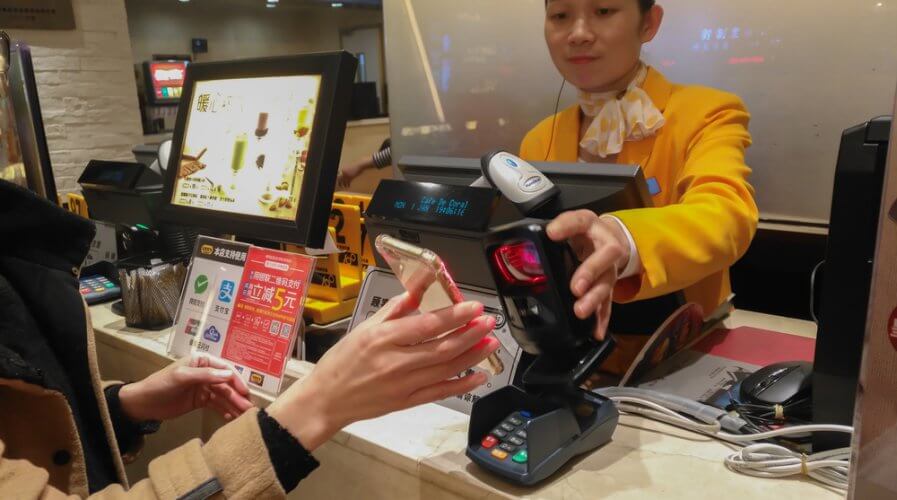
Meta & Bain: Southeast Asia leads in the adoption of fintech, web3. Source: Shutterstock
Meta & Bain: Southeast Asia leads in the adoption of fintech, web3
- Southeast Asia is largely ahead of the pack in the adoption of fintech and web3, including metaverse-related tools, Meta and Bain & Company’s annual SYNC SEA report shows.
- Southeast Asia sees a higher level of penetration of e-Wallets, cryptocurrency and non-fungible tokens (NFTs), compared to most other markets including China, the US, the EU and Japan.
- Malaysia and Singapore are at the forefront of adoption in the Internet banking space, with the rest of Southeast Asia still catching up.
The world has been seeing how digitalization is reshaping Asia — but the region that is leading in the overall adoption of future technologies compared to other markets on a global level is Southeast Asia. According to Meta and Bain & Company’s annual SYNC Southeast Asia (SEA) report, the region is also largely ahead of the pack when it comes to the adoption of fintech and web3, including metaverse-related tools.
The report, titled Southeast Asia’s digital consumers: A new stage of evolution, highlights how the region continues to be a relatively stable playing field even as the world continues to face uncertainty in growth. “Southeast Asia is largely ahead of the pack in the adoption of fintech and web3, including metaverse-related tools,” Meta and Bain said in the report.
Precisely, in categories such as e-wallets, cryptocurrency and non-fungible tokens (NFTs), Southeast Asia sees a higher level of penetration compared to most other markets such as the US, the EU, Japan and even China. The authors of the report also compared Southeast Asia to India, which currently leads in e-wallet penetration. “Southeast Asia is not that far behind,” the report shows.
Malaysia and Singapore, as expected, are at the forefront of adoption in the Internet banking space, with the rest of Southeast Asia still catching up, Meta & Bain said. Frankly, the high penetration of fintech and web3 in the region is driven by a large unbanked population and the lower degree of legacy infrastructure that needs to be updated. Interestingly, in that part of the world, cryptocurrencies and NFTs also present strong income-generation opportunities.
A survey by Meta & Bain for the report also reflects that almost 70% in Southeast Asia have also used at least one metaverse-related tech in the last year. The experience of metaverse-related technology such as augmented reality, virtual reality, virtual worlds, cryptocurrencies and NFTs will evolve from 2D apps currently, to immersive virtual 3D experiences in the next two to three years.
The study forecasts virtual reality for business such as training and development as well as virtual working and the holding of social events in virtual worlds to be available in the region in the next 10 to 15 years. Moreover, the report noted that the digital consumer population in Southeast Asia is still growing steadily and is forecast to reach 370 million by end-2022, accounting for 82% of the total population of 15-year-olds and above.
This figure is projected to rise further to 402 million by 2027, accounting for 88% by the end of the forecast period. The region’s working population, which is defined as people within the age range of 15 to 64 years old, is set to grow by 23 million people by 2030. Indonesia is set to lead this trend, with its working population forecast to increase by 13 million. This is followed by the Philippines (nine million), and Malaysia and Vietnam (two million each).
That said, Southeast Asia also has the room to grow in healthtech and edtech, mainly because penetration of healthtech in the region is outpaced by other more developed markets such as the US and the EU. “This could be due to the strength of life sciences research in these two markets and the greater appetite for venture capital funding of healthtech startups,” Meta & Bain said.
Overall, the report suggests that in spite of the macro outlook and potential industry-wide “belt tightening”, businesses should maintain the course of investment and business development in Southeast Asia. The Southeast Asian opportunity abounds, with strong economic and structural fundamentals incomparable to other regions. “Southeast Asia is a highly attractive market with untapped headroom and potential. Businesses should not miss the opportunity to set base and develop their market presence across the region,” Meta & Bain concluded.
READ MORE
- 3 Steps to Successfully Automate Copilot for Microsoft 365 Implementation
- Trustworthy AI – the Promise of Enterprise-Friendly Generative Machine Learning with Dell and NVIDIA
- Strategies for Democratizing GenAI
- The criticality of endpoint management in cybersecurity and operations
- Ethical AI: The renewed importance of safeguarding data and customer privacy in Generative AI applications


